Plasmonic Enhanced InP Nanowire Array Solar Cell through Optoelectronic Modeling
Abstract
1. Introduction
2. Materials and Methods
3. Results and Discussion
4. Conclusions
Author Contributions
Funding
Data Availability Statement
Acknowledgments
Conflicts of Interest
References
- Mauthe, S.; Baumgartner, Y.; Sousa, M.; Ding, Q.; Rossell, M.D.; Schenk, A.; Czornomaz, L.; Moselund, K.E. High-speed III-V nanowire photodetector monolithically integrated on Si. Nat. Commun. 2020, 11, 1–7. [Google Scholar] [CrossRef]
- Shen, L.; Pun, E.Y.; Ho, J.C. Recent developments in III–V semiconducting nanowires for high-performance photodetectors. Mater. Chem. Front. 2017, 1, 630–645. [Google Scholar] [CrossRef]
- Ren, D.; Azizur-Rahman, K.M.; Rong, Z.; Juang, B.-C.; Somasundaram, S.; Shahili, M.; Farrell, A.C.; Williams, B.S.; Huffaker, D.L. Room-temperature midwavelength infrared InAsSb nanowire photodetector arrays with Al2O3 passivation. Nano Lett. 2019, 19, 2793–2802. [Google Scholar] [CrossRef] [PubMed]
- Berg, A.; Yazdi, S.; Nowzari, A.; Storm, K.; Jain, V.; Vainorius, N.; Samuelson, L.; Wagner, J.B.; Borgström, M.T. Radial Nanowire Light-Emitting Diodes in the (AlxGa1–x)yIn1–yP Material System. Nano Lett. 2016, 16, 656–662. [Google Scholar] [CrossRef]
- Gagliano, L.; Kruijsse, M.; Schefold, J.D.; Belabbes, A.; Verheijen, M.A.; Meuret, S.; Koelling, S.; Polman, A.; Bechstedt, F.; Haverkort, J.E. Efficient Green Emission from Wurtzite Al x In1–x P Nanowires. Nano Lett. 2018, 18, 3543–3549. [Google Scholar] [CrossRef] [PubMed]
- Bui, H.Q.T.; Velpula, R.T.; Jain, B.; Aref, O.H.; Nguyen, H.-D.; Lenka, T.R.; Nguyen, H.P.T. Full-color InGaN/AlGaN nanowire micro light-emitting diodes grown by molecular beam epitaxy: A promising candidate for next generation micro displays. Micromachines 2019, 10, 492. [Google Scholar] [CrossRef]
- Kim, H. III-V Semiconductor Nanowire Lasers on Silicon; UCLA: Los Angeles, CA, USA, 2018. [Google Scholar]
- Zhang, G.; Takiguchi, M.; Tateno, K.; Tawara, T.; Notomi, M.; Gotoh, H. Telecom-band lasing in single InP/InAs heterostructure nanowires at room temperature. Sci. Adv. 2019, 5, eaat8896. [Google Scholar] [CrossRef]
- Gao, Y.; Murai, S.; Zhang, F.; Tamura, S.; Tomita, K.; Tanaka, K. Enhancing upconversion photoluminescence by plasmonic-photonic hybrid mode. Opt. Express 2020, 28, 886–897. [Google Scholar] [CrossRef] [PubMed]
- Singh, B.; Shabat, M.M.; Schaadt, D.M. Wide angle antireflection in metal nanoparticles embedded in a dielectric matrix for plasmonic solar cells. Prog. Photovolt. Res. Appl. 2020, 28, 682–690. [Google Scholar] [CrossRef]
- Samajdar, D. Performance enhancement of Nanopyramid based Si hybrid solar cells utilizing the plasmonic properties of oxide coated Metal Nanoparticles. Opt. Mater. 2020, 107, 110166. [Google Scholar]
- Ghahremanirad, E.; Olyaee, S.; Hedayati, M. The Influence of Embedded Plasmonic Nanostructures on the Optical Absorption of Perovskite Solar Cells. Photonics 2019, 6, 37. [Google Scholar] [CrossRef]
- Liu, B.; Chen, S.; Zhang, J.; Yao, X.; Zhong, J.; Lin, H.; Huang, T.; Yang, Z.; Zhu, J.; Liu, S. A plasmonic sensor array with ultrahigh figures of merit and resonance linewidths down to 3 nm. Adv. Mater. 2018, 30, 1706031. [Google Scholar] [CrossRef]
- Pathak, N.K.; Chander, N.; Komarala, V.K.; Sharma, R. Plasmonic perovskite solar cells utilizing Au@SiO 2 core-shell nanoparticles. Plasmonics 2017, 12, 237–244. [Google Scholar] [CrossRef]
- Jangjoy, A.; Bahador, H.; Heidarzadeh, H. A Comparative Study of a Novel Anti-reflective Layer to Improve the Performance of a Thin-Film GaAs Solar Cell by Embedding Plasmonic Nanoparticles. Plasmonics 2021, 16, 395–401. [Google Scholar] [CrossRef]
- Ferry, V.E.; Verschuuren, M.A.; Lare, M.C.v.; Schropp, R.E.; Atwater, H.A.; Polman, A. Optimized spatial correlations for broadband light trapping nanopatterns in high efficiency ultrathin film a-Si: H solar cells. Nano Lett. 2011, 11, 4239–4245. [Google Scholar] [CrossRef] [PubMed]
- Deka, N.; Islam, M.; Sarswat, P.K.; Kumar, G. Enhancing solar cell efficiency with plasmonic behavior of double metal nanoparticle system. Vacuum 2018, 152, 285–290. [Google Scholar] [CrossRef]
- Diukman, I.; Orenstein, M. How front side plasmonic nanostructures enhance solar cell efficiency. Sol. Energy Mater. Sol. Cells 2011, 95, 2628–2631. [Google Scholar] [CrossRef]
- Cao, S.; Yu, D.; Lin, Y.; Zhang, C.; Lu, L.; Yin, M.; Zhu, X.; Chen, X.; Li, D. Light Propagation in Flexible Thin-film Amorphous Silicon Solar Cells with Nanotextured Metal Back Reflectors. ACS Appl. Mater. Interfaces 2020, 12, 26184–26192. [Google Scholar] [CrossRef]
- Sun, T.; Shi, H.; Cao, L.; Liu, Y.; Tu, J.; Lu, M.; Li, H.; Zhao, W.; Li, Q.; Fu, T. Double grating high efficiency nanostructured silicon-based ultra-thin solar cells. Results Phys. 2020, 19, 103442. [Google Scholar] [CrossRef]
- Hungerford, C.D.; Fauchet, P.M. Design of a plasmonic back reflector using Ag nanoparticles with a mirror support for an a-Si: H solar cell. AIP Adv. 2017, 7, 75004. [Google Scholar] [CrossRef]
- Liu, K.; Zhang, R.; Liu, Y.; Chen, X.; Li, K.; Pickwell-Macpherson, E. Gold nanoparticle enhanced detection of EGFR with a terahertz metamaterial biosensor. Biomed. Opt. Express 2021, 12, 1559–1567. [Google Scholar] [CrossRef]
- Devine, E.P. Mid-infrared photodetector based on 2D material metamaterial with negative index properties for a wide range of angles near vertical illumination. Appl. Phys. A 2021, 127, 1–5. [Google Scholar]
- Jiang, X.; Wang, T.; Zhong, Q.; Yan, R.; Huang, X. A near-ideal solar selective absorber with strong broadband optical absorption from UV to NIR. Nanotechnology 2020, 31, 315202. [Google Scholar] [CrossRef]
- Jiang, X.; Wang, T.; Zhong, Q.; Yan, R.; Huang, X. Ultrabroadband light absorption based on photonic topological transitions in hyperbolic metamaterials. Opt. Express 2020, 28, 705–714. [Google Scholar] [CrossRef] [PubMed]
- Chang, S.; Lee, G.J.; Song, Y.M. Recent Advances in Vertically Aligned Nanowires for Photonics Applications. Micromachines 2020, 11, 726. [Google Scholar] [CrossRef] [PubMed]
- Lu, W.; Lieber, C.M. Semiconductor nanowires. J. Phys. D Appl. Phys. 2006, 39, R387. [Google Scholar] [CrossRef]
- Palik, E.D. Handbook of Optical Constants of Solids; Academic Press: Cambridge, MA, USA, 1998; Volume 3. [Google Scholar]
- Darling, R.B. Defect-state occupation, Fermi-level pinning, and illumination effects on free semiconductor surfaces. Phys. Rev. 1991, 43, 4071. [Google Scholar] [CrossRef]
- Adibzadeh, F.; Olyaee, S. Performance improvement of InP nanowire array solar cells by decorated nanowires and using back reflector. Opt. Mater. 2020, 109, 110397. [Google Scholar] [CrossRef]
- Rosenwaks, Y.; Shapira, Y.; Huppert, D. Metal reactivity effects on the surface recombination velocity at InP interfaces. Appl. Phys. Lett. 1990, 57, 2552–2554. [Google Scholar] [CrossRef]
- Vurgaftman, I.; Meyer, J.Á.; Ram-Mohan, L.Á. Band parameters for III–V compound semiconductors and their alloys. J. Appl. Phys. 2001, 89, 5815–5875. [Google Scholar] [CrossRef]
- Shur, M.S. Handbook Series on Semiconductor Parameters; World Scientific: Singapore, 1996; Volume 1. [Google Scholar]
- Anttu, N.; Xu, H. Efficient light management in vertical nanowire arrays for photovoltaics. Opt. Express 2013, 21, A558–A575. [Google Scholar] [CrossRef]
- Aghaeipour, M.; Anttu, N.; Nylund, G.; Samuelson, L.; Lehmann, S.; Pistol, M.-E. Tunable absorption resonances in the ultraviolet for InP nanowire arrays. Opt. Express 2014, 22, 29204–29212. [Google Scholar] [CrossRef] [PubMed]
- Diedenhofen, S.L.; Janssen, O.T.; Grzela, G.; Bakkers, E.P.; Gómez Rivas, J. Strong geometrical dependence of the absorption of light in arrays of semiconductor nanowires. ACS Nano 2011, 5, 2316–2323. [Google Scholar] [CrossRef] [PubMed]
- Seo, K.; Wober, M.; Steinvurzel, P.; Schonbrun, E.; Dan, Y.; Ellenbogen, T.; Crozier, K.B. Multicolored vertical silicon nanowires. Nano Lett. 2011, 11, 1851–1856. [Google Scholar] [CrossRef]
- Li, J.; Yu, H.; Li, Y. Solar energy harnessing in hexagonally arranged Si nanowire arrays and effects of array symmetry on optical characteristics. Nanotechnology 2012, 23, 194010. [Google Scholar] [CrossRef] [PubMed]
- Wallentin, J.; Anttu, N.; Asoli, D.; Huffman, M.; Åberg, I.; Magnusson, M.H.; Siefer, G.; Fuss-Kailuweit, P.; Dimroth, F.; Witzigmann, B.; et al. InP nanowire array solar cells achieving 13.8% efficiency by exceeding the ray optics limit. Science 2013, 339, 1057–1060. [Google Scholar] [CrossRef] [PubMed]
- Wang, B.; Leu, P.W. Tunable and selective resonant absorption in vertical nanowires. Opt. Lett. 2012, 37, 3756–3758. [Google Scholar] [CrossRef]
- Anttu, N. Physics and design for 20% and 25% efficiency nanowire array solar cells. Nanotechnology 2018, 30, 074002. [Google Scholar] [CrossRef]

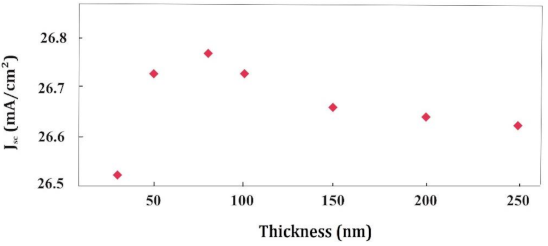
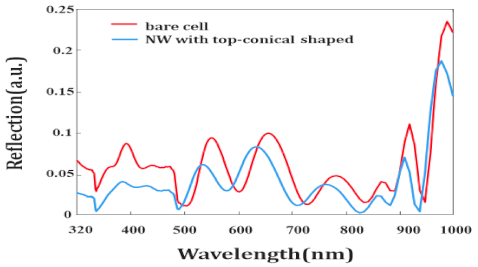

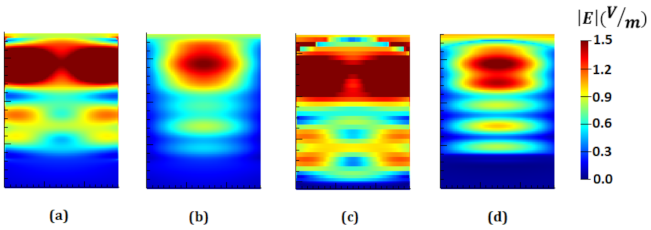

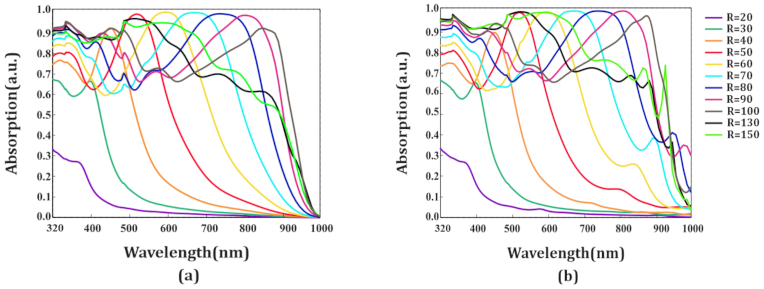
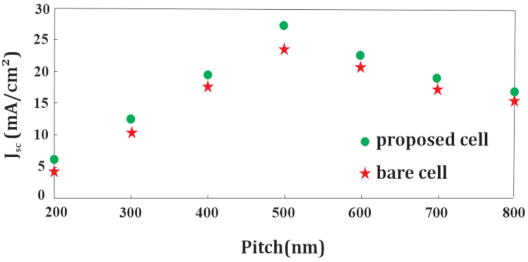
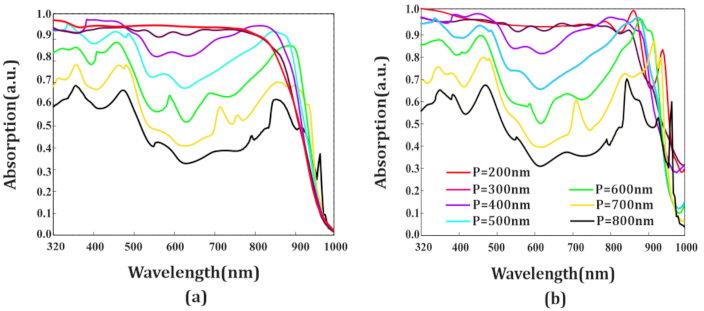
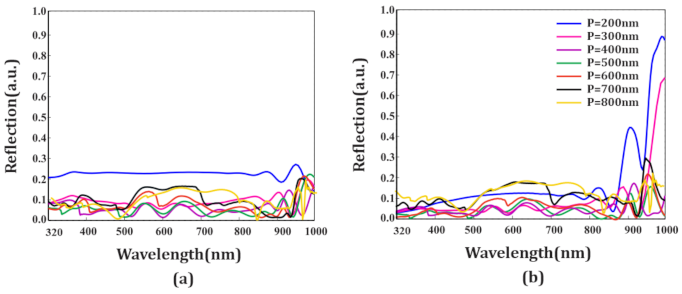
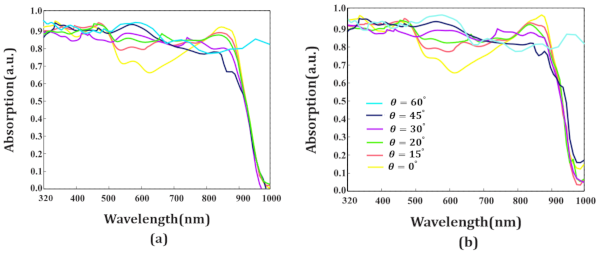
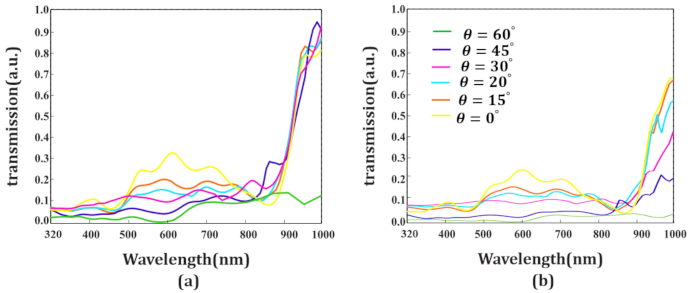
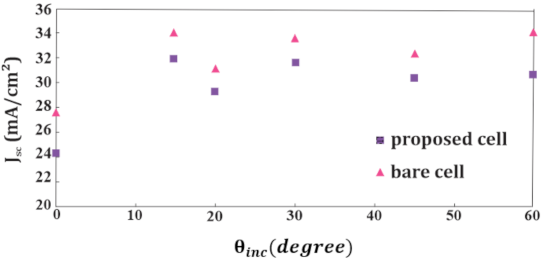
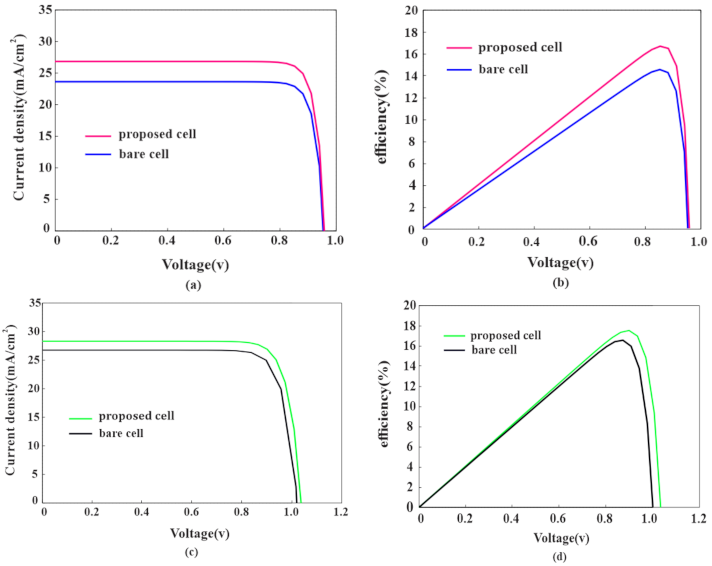
| Parameters | InP |
|---|---|
| Dielectric constant (εr) | 12.5 |
| SRH recombination coefficient (A) | |
| Auger recombination coefficient (C) | |
| Electron mobility () | 5400 |
| Hole mobility () | 250 |
| Band gap | 1.34 eV |
| Structure | Voc (Volt) | Jsc (mA/cm2) | FF (%) | Efficiency (%) | Jsc Enhancement (%) |
|---|---|---|---|---|---|
| Ohmic Contacts | |||||
| Bare cell | 0.958 | 24.1 | 63.67 | 14.7 | ---------- |
| Proposed cell | 0.963 | 27.64 | 63.87 | 17 | 14.69 |
| Perfect Carrier Selective Contacts | |||||
| Bare cell | 1.015 | 24.71 | 66.03 | 16.56 | ---------- |
| Proposed cell | 1.02 | 28.2 | 67.97 | 19.55 | 14.12 |
Publisher’s Note: MDPI stays neutral with regard to jurisdictional claims in published maps and institutional affiliations. |
© 2021 by the authors. Licensee MDPI, Basel, Switzerland. This article is an open access article distributed under the terms and conditions of the Creative Commons Attribution (CC BY) license (http://creativecommons.org/licenses/by/4.0/).
Share and Cite
Adibzadeh, F.; Olyaee, S. Plasmonic Enhanced InP Nanowire Array Solar Cell through Optoelectronic Modeling. Photonics 2021, 8, 90. https://doi.org/10.3390/photonics8040090
Adibzadeh F, Olyaee S. Plasmonic Enhanced InP Nanowire Array Solar Cell through Optoelectronic Modeling. Photonics. 2021; 8(4):90. https://doi.org/10.3390/photonics8040090
Chicago/Turabian StyleAdibzadeh, Farzaneh, and Saeed Olyaee. 2021. "Plasmonic Enhanced InP Nanowire Array Solar Cell through Optoelectronic Modeling" Photonics 8, no. 4: 90. https://doi.org/10.3390/photonics8040090
APA StyleAdibzadeh, F., & Olyaee, S. (2021). Plasmonic Enhanced InP Nanowire Array Solar Cell through Optoelectronic Modeling. Photonics, 8(4), 90. https://doi.org/10.3390/photonics8040090





